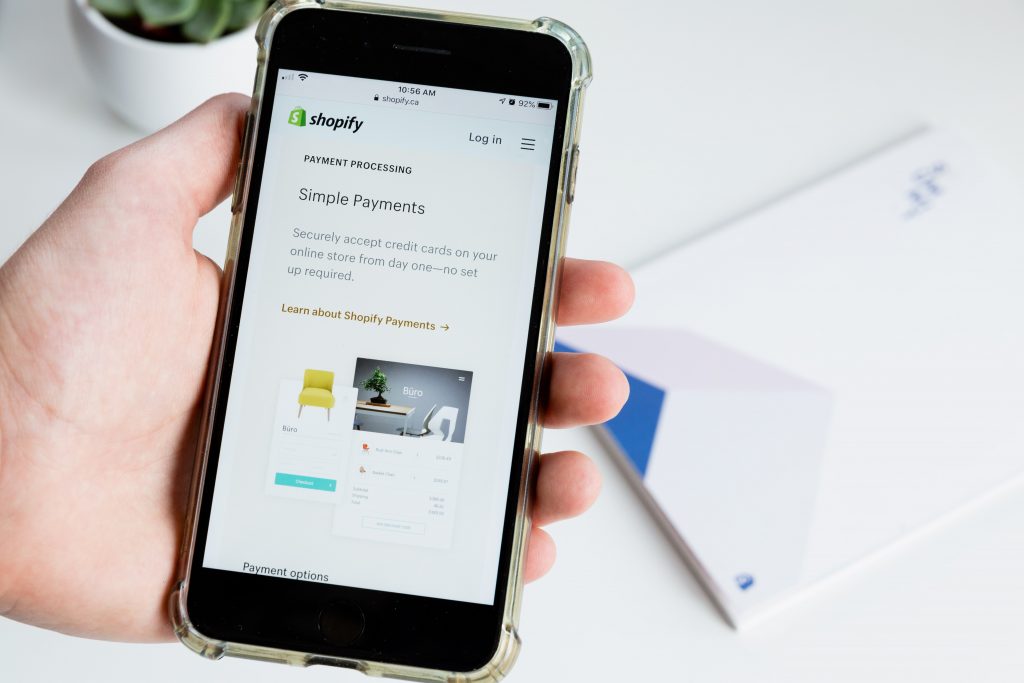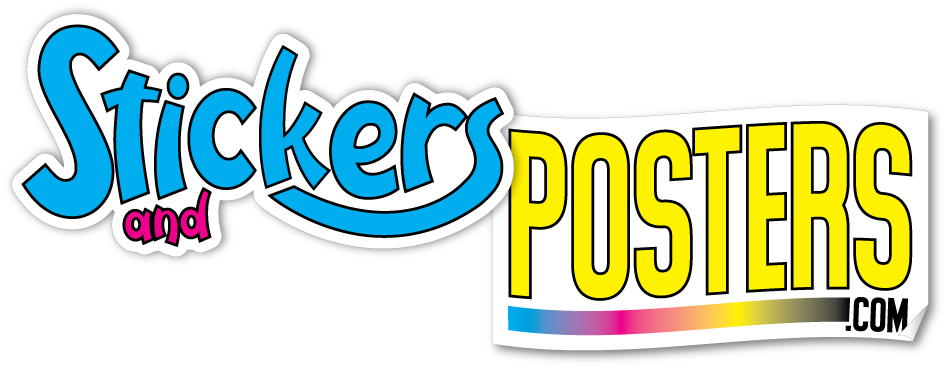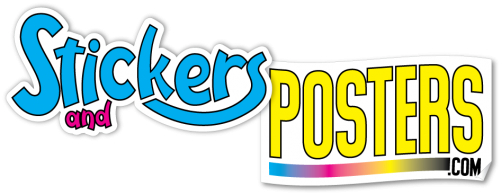
The Psychology of Stickers
January 5, 2021
10 Tips for Shopify Landing Pages That Convert
February 24, 2021While every marketer understands the importance of keeping up with trends, many marketers, business owners, and brands are wondering how best to reach consumers in the coming year. The fact that 2020 forever changed the landscape of retail has been widely discussed, but the pandemic’s true impact on consumer behavior is still evolving.
No one could have ever predicted how heavily reliant our locked-down society would become on online platforms and interactions. No one could have ever predicted that an app hinged on dance videos and cute filters would carve through 2020 so unequivocally, smashing records for social media platforms. No one could have ever predicted our homes would become our offices, classrooms, gyms, and safe places. No one could have ever predicted parents, students, workers, and families would become reliant upon video conferencing tools and programs for school, work, social interactions, and even holiday gatherings.
Based on the widespread adoption of and reliance on technology, the surge in digitization we experienced in 2020 will undoubtedly carry on into 2021 and beyond. In order to stay connected to consumers, businesses and brands will need to reach them where they are – online!
Here are the marketing channels to leverage in 2021!

E-Commerce
The pandemic has accelerated ecommerce growth in the US this year, with online sales reaching a level not previously expected until 2022.
US ecommerce sales will reach $794.50 billion this year, up 32.4% year-over-year.
Ecommerce sales will reach 14.4% of all US retail spending this year and 19.2% by 2024. When excluding gas and auto sales (categories sold almost exclusively offline), ecommerce penetration jumps to 20.6%.
“There will be some lasting impacts from the pandemic that will fundamentally change how people shop,” said Cindy Liu, eMarketer senior forecasting analyst at Insider Intelligence. “For one, many stores, particularly department stores, may close permanently. Secondly, we believe consumer shopping behaviors will permanently change. Many consumers have either shopped online for the first time or shopped in new categories (i.e., groceries). Both the increase in new users and frequency of purchasing will have a lasting impact on retail.”
Source: EMarketer – https://www.emarketer.com/content/us-ecommerce-growth-jumps-more-than-30-accelerating-online-shopping-shift-by-nearly-2-years
Omni-Channel
Omni-channel shopping will become more prevalent. As the lines blur between the physical and digital environment, multiple channels will become more prevalent in customers’ path to purchase. This is evidenced by 73% of customers using multiple channels during their shopping journey. What it means for e-Commerce is to understand how their customers buy, which marketing channels do they engage with, and their motivations and main drivers to purchase. In the simplest sense, omni-channel shopping means decoding what, where, when, why, and how people are purchasing the products you sell on a particular channel.
Source: https://beeketing.com/blog/future-ecommerce-2019/

Social Shopping
Today’s sellers can do way more than just advertising on Facebook, Instagram, or any other social platform. With the improvement of social media’s selling capabilities, social media platforms now allow customers to conveniently and quickly purchase products up there. Instagram, Twitter, Pinterest, Facebook, and YouTube are among the social media channels which rolled out the “buy” buttons and made significant improvement their social selling features. For instance, Instagram launched its ‘shoppable post’ feature, allowing businesses to enable product tags in their posts and product stickers in stories. Businesses and brands must reach and interact with both existing and potential consumers on social media.
E-Commerce Personalization
E-commerce personalization has become a huge trend among businesses over the past couple of years but in 2020 and the succeeding years to come, it won’t just be a mere trend. As customers expectation of personalization increases, personalization will become an eCommerce standard. In fact, 33% of customers have ended their relationship to a business with insufficient or no personalization in place.
Source: beeketing.com/blog/future-ecommerce-2019/
The Continued Growth and Emergence of Etsy
Growth in active sellers is a key indicator for growth in gross merchandise volume and revenue, because it expands the catalog. Etsy continues to dominate this category! 2020 Q3, 3.68 million active sellers on Etsy, up by 51% year-over-year from 2.44 million.

Source: https://www.marketplacepulse.com/stats/etsy/etsy-number-of-active-sellers-2
Some fun facts about Etsy:
- Etsy had over 2.5 million sellers at the end of 2019, and we can only expect that this number has increased.
- Etsy sellers live all over the world, in 234 countries.
- 62% of Etsy sellers are based in the US.
- California is home to the most Etsy sellers with 14% of US-based Etsy shops.
- The UK is the leading location outside of the US, with 30% of international Etsy sellers.
- 61% of Etsy sellers are multi-channel retailers.
- 83% of Esty sellers identify as women.
- 82% of Etsy sellers want to grow their business.
- 43% of sellers use the Etsy app to manage their sales.
- Top Etsy sellers make $10,000 per year or more.
- The top Etsy seller in the US, PlannerKate1, has had over 1.2 million sales since opening.
- Last year, Etsy’s annual merchandise sales volume totaled $4.97 billion US dollars.
- In the first six months of 2020, Etsy sales grew 71% YoY.
- Etsy acquired Reverb, an online marketplace for musical instruments, for $275 million US dollars in 2019.
- Experts predict that Etsy’s revenue will grow 22% between 2019 and 2021.
- Etsy has three major revenue streams, including services like website hosting platform Pattern and promoted listings, but the marketplace consistently brings in the most.
- Etsy generates over $330 million US dollars in revenue from marketplace fees, including listing and transaction fees.
- Etsy became a publicly traded company in the US in 2015, about 10 years after it was founded.
- Etsy has over 60 million products listed on its platform.
- Home & Goods is the most popular product category as of June 2020.
- The most popular Etsy product searches for August 2020 were “face mask,” with over 875,000 queries; “wall decor,” with over 500,000; and “personalized gifts,” with over 370,000.
- 45.7 million people purchased goods on Etsy in 2019.
- As of Q2 2020, there are 60.27 million buyers on Etsy.
- Etsy buyers are often repeat customers. More than 40% of Etsy buyers purchased more than one item in 2018.
Source: https://www.veeqo.com/us/blog/etsy-statistics
As evidenced by these stats, there will be some lasting impacts from the pandemic that will fundamentally change how people shop. E-Commerce will continue to growth beyond the pandemic and omni-channel shopping will become more prevalent. As the lines blur between the physical and digital environment, multiple channels will become more prevalent in customers’ path to purchase! With the improvement of social media’s selling capabilities, social media platforms now allow customers to conveniently and quickly purchase products up there. It’s imperative businesses and brand reach consumers on social media. Consumers crave personalization, especially as it relates to e-commerce and Etsy’s growth and dominance is here to stay!
If you’re looking to launch a new business or brand, or learn how to adapt your existing product offerings to the online marketplace, please feel free to reach out to StickersAndPosters.com! We understand today’s consumers and have designed our business to cater to them! Not directly, as our specialties lie in printing (not sales), but by helping our partners expand their product lines, e-Commerce solutions, and supply chain to include innovative, fully customizable printed products unlike any in the marketplace! We print and ship them with lightning quick speed, too!
Our cutting-edge technology seamlessly integrates with e-Commerce platforms and websites, allowing end customers to order directly from your site. Once the order is placed, we take over with on-demand printing and white label drop-shipping. No minimum orders for your customers, no inventory for you, and no limits to creativity! And we’re here to help you every step of the way!





